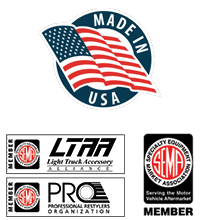When someone talks about luxury material, one of the first things that come to mind is leather. It’s used to make clothing, crafts, and upholstery. However, the two factors that are changing people’s opinions about this material are cost and production.
While some people may enjoy the look and feel of leather, many are unhappy with the way it’s produced. There is an increasing awareness about animal cruelty. Also, leather tends to come with a steep price tag. With these two elements in mind, a lot of consumers are choosing the alternative to genuine leather. Specifically, they’re purchasing faux leather.
Contents
What is Faux Leather?
Unlike genuine leather, faux leather is man-made and doesn’t involve natural elements of any kind. It’s completely composed of synthetic material. Faux leather also referred to as vegan leather, comes in several different qualities. And in many cases, it can be difficult to distinguish between the real and the fake.
Not only is this material more economical and made in cruelty-free environments, but it’s very durable. It’s not prone to peeling and cracking like genuine leather. It can hold up against scrapes and scratches.
Another benefit is that it’s low-maintenance and easy to work with. Moisture can cause real leather to warp so it requires special cleaning solutions. However, faux leather can be wiped clean with warm water and a towel.
Faux leather is also very easy to work with. Real leather is thick which can make it difficult to cut and sew. This isn’t a problem with vegan leather. It cuts easily and the needle marks from the sewing are barely noticeable. This gives the material a more seamless look.
What Are Its Uses?
Essentially, faux leather can be used to produce anything that leather is used to produce. For instance, it’s often used in fashion. Because it’s so easy to cut and sew and can be dyed in several different colors, it’s used to create jackets, hats, bags, purses, briefcases, and much more.
Faux leather is used to create furniture. This includes sofas, beds, chairs, and lampshades. And it’s only a fraction of the cost of furniture made from genuine leather.
Faux leather is also used in car upholstery. This is especially the case when it comes to accessories. It’s used to create car seat covers, steering wheel covers, and floor mats.
Types of Faux Leather
For faux leather to become the carbon copy that we know today, it has to undergo several processes. The two types of materials used in this process are polyurethane and polyvinyl chloride.
Polyurethane (PU)
Polyurethane, better known as PU, feels the same as genuine leather. However, it’s usually much lighter. This is the type of leather that’s used in vehicles because it doesn’t fade or crack when it’s exposed to direct sunlight and can be produced in several different styles and colors.
PU isn’t as breathable as genuine leather but it’s the most breathable material in comparison to other synthetic materials such as polyvinyl chloride. While genuine leather tends to get more soft over time, PU maintains a consistent feel and look.
In most cases, the only way to tell the difference between PU and genuine leather is to check the label or the price. You may consider how porous the material looks. If the leather is real, the pores of the animal are still present. You can also distinguish it from the smell. PU typically has a distinct smell of plastic.
Polyvinyl Chloride (PVC)
Polyvinyl chloride, also referred to as vinyl or PVC, is plastic. This plastic is so versatile that it’s been used in several areas of modern society. it’s used for rain gutters, flooring, outdoor furniture, window frames, and automotive parts. When this material is softened, it can be used as raincoats, plastic bags, and credit cards, and synthetic leather.
One of the best things about PVC is that it has no odor. And it’s easily recycled.
In many instances it is broken down, the impurities removed, and transformed into white PVC. Also, PVC is more flexible and softer when plasticizers are added. And this helps to improve its overall performance. Its lifecycle is 100+ years.
The biggest difference between PVC and PU is how they’re structured. PVC is equipped with more layers which makes it more durable and tougher than PU. PVC is typically better when it comes to extreme weather conditions and maintenance. However, in most instances, PVC doesn’t look as much like leather as PU does.
Conclusion
There are several reasons why you may prefer synthetic leather to genuine leather. The good news is that you’re not missing out on much. This is especially the case if you’re interested in material that is as durable as real leather but less expensive. The key is to choose the material that best suits your lifestyle. One type of leather is easier to clean and requires little to no maintenance.



 View My Cart
View My Cart
